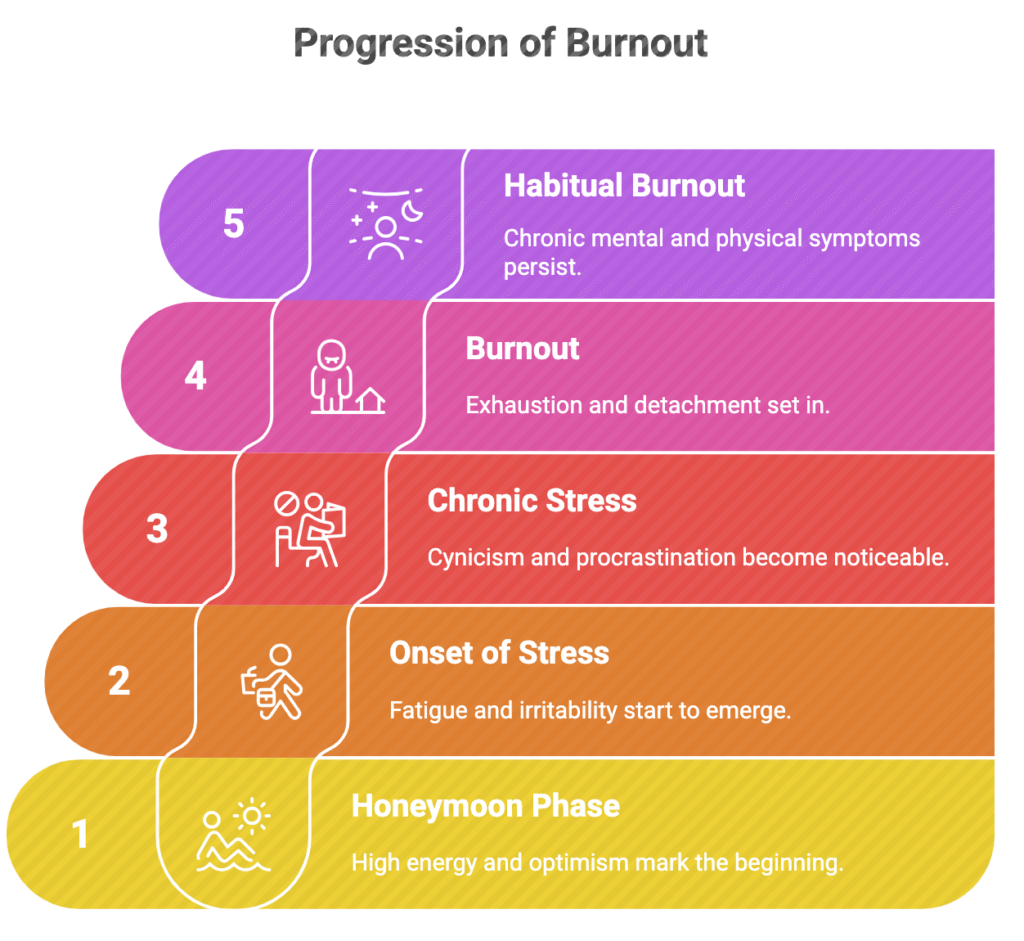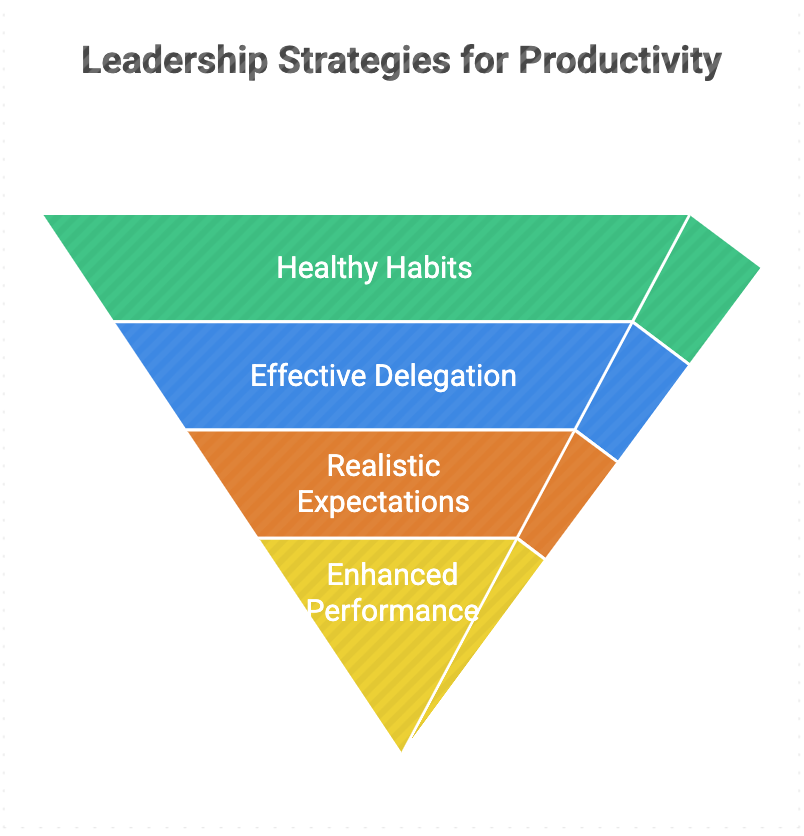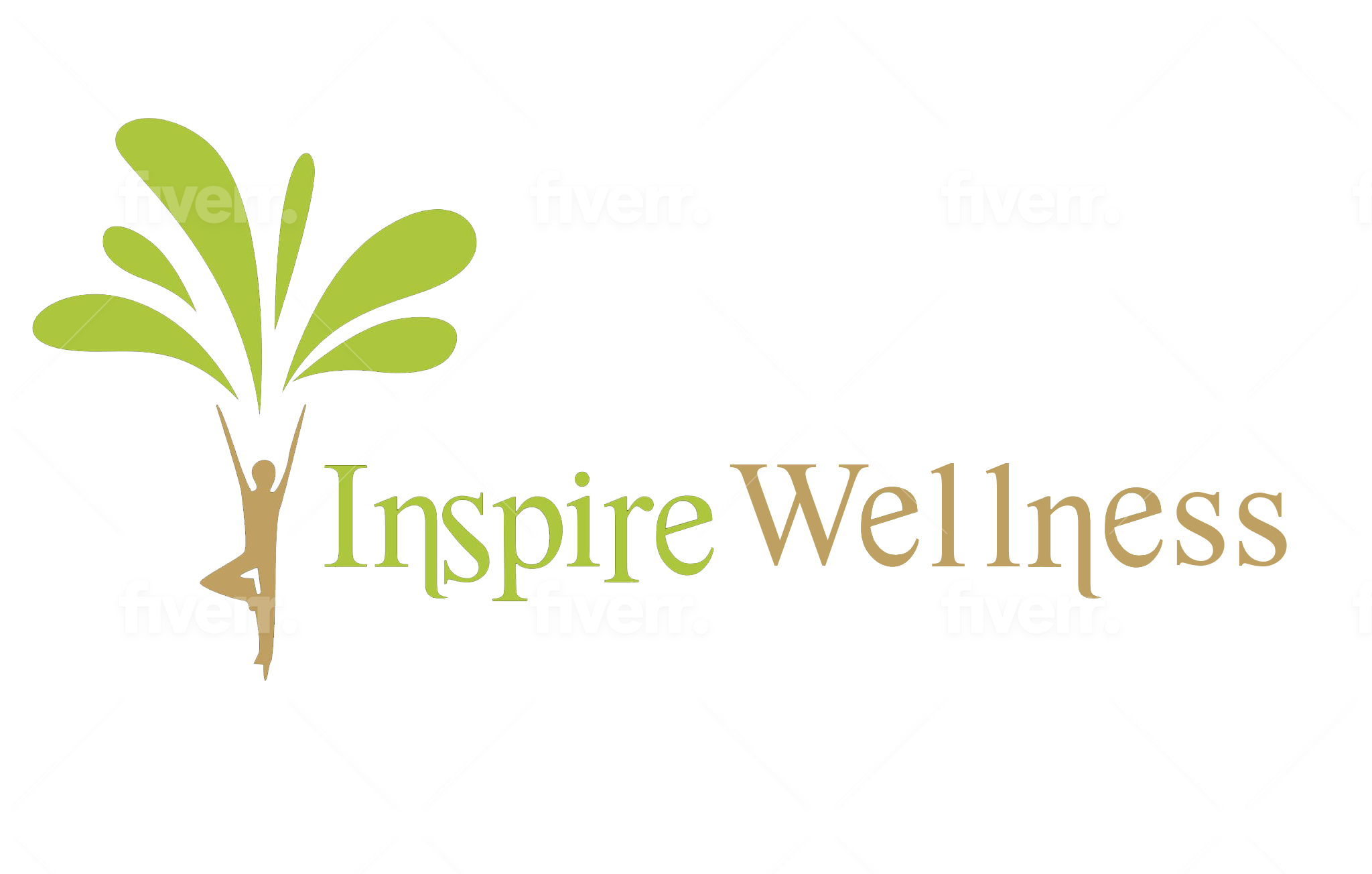A Comprehensive Guide to Building a Resilient Workforce

The High Cost of Workplace Stress
In today’s hyper-connected, fast-paced corporate environment, stress and burnout have reached epidemic levels, especially here in the UAE. A staggering 83% of workers experience work-related stress, with 76% reporting that workplace stress harms their mental health (American Psychological Association, 2023). For leadership, the stakes are even higher—chronic stress impairs decision-making, reduces emotional intelligence, and increases turnover.
But here’s the good news: leaders who proactively manage stress don’t just protect their own well-being—they create healthier, more productive teams. Research from Harvard Business Review reveals that companies with strong wellness programs see a 28% reduction in absenteeism and a 31% increase in productivity.
This Corporate Wellness guide synthesizes the latest research from MIT Sloan, Forbes, and Harvard Medical School research to provide actionable, science-backed strategies for leaders to:
- Identify and mitigate personal stressors
- Foster a low-stress, high-performance work environment
- Model and teach effective stress management techniques
- Build a culture that prevents burnout before it starts
Understanding Stress—The Science Behind Burnout
How Chronic Stress Impacts Leaders and Teams
Stress triggers the hypothalamic-pituitary-adrenal (HPA) axis, flooding the body with cortisol. In small doses, this sharpens focus, but prolonged exposure leads to:
- Cognitive decline – Reduced memory, creativity, and problem-solving (NIH, 2023)
- Emotional dysregulation – Increased irritability and conflict (Journal of Applied Psychology)
- Physical health risks – 40% higher risk of heart disease (American Heart Association)
For teams, leader stress is contagious. A Yale study found that employees with stressed managers are 33% more likely to disengage.
The 5 Stages of Burnout
By recognizing the signs and symptoms associated with each stage, individuals and organizations can proactively address burnout and implement strategies to prevent its advancement. From the initial honeymoon phase to the chronic habitual burnout, this guide offers insights into the emotional, mental, and physical changes that occur, empowering readers to take timely action and safeguard their well-being.

Honeymoon Phase – High Energy, Optimism
The honeymoon phase is the initial stage of a new job, project, or responsibility. It’s characterized by high energy levels, enthusiasm, and optimism. Individuals in this phase are often highly committed, motivated, and eager to prove themselves. They may work long hours and take on extra tasks without feeling overwhelmed.
Key Characteristics:
- High Energy: Feeling energized and motivated to tackle new challenges.
- Optimism: Maintaining a positive outlook and believing in the success of the endeavor.
- Commitment: Being fully dedicated and invested in the work.
- Satisfaction: Experiencing a sense of accomplishment and fulfillment.
- Creativity: Generating new ideas and approaches to problem-solving.
How to Spot It:
- Noticeable enthusiasm and excitement about work.
- Willingness to go the extra mile and take on additional responsibilities.
- Positive attitude and belief in the potential for success.
- High levels of productivity and engagement.
While this phase is generally positive, it’s important to be mindful of setting realistic expectations and maintaining a healthy work-life balance to prevent burnout in the long run.
Onset of Stress – Fatigue, Irritability
As the initial excitement begins to fade, the onset of stress marks the second stage of burnout. The demands of the job or project start to take a toll, leading to increased fatigue, irritability, and difficulty concentrating. Individuals may begin to experience physical symptoms such as headaches or stomach problems.
Key Characteristics:
- Fatigue: Feeling tired and drained, even after adequate rest.
- Irritability: Becoming easily frustrated and short-tempered.
- Difficulty Concentrating: Struggling to focus and maintain attention.
- Sleep Disturbances: Experiencing insomnia or restless sleep.
- Increased Anxiety: Feeling worried and apprehensive about work-related issues.
How to Spot It:
- Noticeable decline in energy levels and enthusiasm.
- Increased complaints about workload and stress.
- More frequent displays of frustration and irritability.
- Difficulty meeting deadlines and completing tasks.
- Withdrawal from social interactions and activities.
This stage is a critical warning sign that needs to be addressed promptly. Implementing stress management techniques, setting boundaries, and seeking support can help prevent the progression to more severe stages of burnout.
Chronic Stress – Cynicism, Procrastination
If the stress is not addressed in the previous stage, it can develop into chronic stress. This stage is characterized by persistent feelings of cynicism, detachment, and procrastination. Individuals may start to question the value of their work and lose interest in their responsibilities.
Key Characteristics:
- Cynicism: Developing a negative and distrustful attitude towards work and colleagues.
- Procrastination: Delaying tasks and responsibilities, even when they are important.
- Detachment: Feeling emotionally disconnected from work and colleagues.
- Reduced Performance: Experiencing a decline in productivity and quality of work.
- Increased Absenteeism: Taking more sick days or arriving late to work.
How to Spot It:
- Frequent expression of negative opinions and criticisms.
- Tendency to avoid or delay tasks and responsibilities.
- Lack of engagement in team activities and discussions.
- Decline in work quality and productivity.
- Increased complaints about physical and emotional health.
At this stage, it’s crucial to seek professional help and implement significant changes to address the underlying causes of stress. This may involve re-evaluating career goals, seeking therapy, or making adjustments to the work environment.
Burnout – Exhaustion, Detachment
The burnout stage represents the culmination of prolonged and unmanaged stress. It’s characterized by overwhelming exhaustion, deep-seated cynicism, and a profound sense of detachment from work and life in general. Individuals in this stage may experience severe physical and emotional symptoms.
Key Characteristics:
- Exhaustion: Feeling completely depleted of energy, both physically and emotionally.
- Detachment: Experiencing a profound sense of emotional distance from work and relationships.
- Cynicism: Developing a pervasive negative attitude towards everything.
- Lack of Accomplishment: Feeling a sense of failure and inadequacy.
- Physical Symptoms: Experiencing a range of physical ailments, such as headaches, stomach problems, and weakened immune system.
How to Spot It:
- Persistent feelings of fatigue and exhaustion, even after rest.
- Inability to concentrate or focus on tasks.
- Loss of interest in work and hobbies.
- Withdrawal from social interactions and relationships.
- Frequent physical complaints and illnesses.
This stage requires immediate intervention and support. It’s essential to seek professional help, take time off to rest and recover, and make significant changes to address the underlying causes of burnout.
Habitual Burnout – Chronic Mental/Physical Symptoms
Habitual burnout represents the final and most severe stage of burnout. At this point, the symptoms of burnout have become deeply ingrained and chronic, leading to long-term mental and physical health problems. Individuals in this stage may experience persistent depression, anxiety, and other serious health issues.
Key Characteristics:
- Chronic Mental Health Problems: Experiencing persistent depression, anxiety, and other mental health disorders.
- Chronic Physical Health Problems: Developing long-term physical ailments, such as cardiovascular disease, gastrointestinal problems, and musculoskeletal disorders.
- Impaired Cognitive Function: Experiencing difficulties with memory, concentration, and decision-making.
- Social Isolation: Becoming increasingly isolated from friends, family, and colleagues.
- Reduced Quality of Life: Experiencing a significant decline in overall well-being and life satisfaction.
How to Spot It:
- Persistent symptoms of burnout that do not improve with rest or treatment.
- Diagnosis of chronic mental or physical health problems.
- Significant impairment in cognitive function and social interactions.
- Inability to function effectively in work or personal life.
- Feelings of hopelessness and despair.
This stage requires intensive and long-term treatment. It’s essential to seek comprehensive medical and psychological care, make significant lifestyle changes, and develop coping strategies to manage the chronic symptoms of burnout. Prevention is key, and recognizing the earlier stages of burnout is crucial to avoid reaching this debilitating stage.
Leaders must intervene at Stage 2, when there is an onset of stress in order to prevent full burnout.
Personal Stress Management for Leaders

1. Identify Your Stressors
Understanding the specific triggers that contribute to stress is the first step in effective stress management. Common stressors for leaders often stem from the demands and responsibilities associated with their roles. Recognizing these triggers allows for targeted interventions and proactive coping mechanisms.
Common Triggers for Leaders:
- Decision Fatigue: The constant need to make choices can deplete mental resources and willpower, leading to increased stress and impaired decision-making.
- Always-On Culture: The expectation to be constantly available and responsive, often fueled by technology, blurs the lines between work and personal life, contributing to chronic stress. A significant 62% of professionals report checking email after work hours, highlighting the prevalence of this issue.
- Lack of Autonomy: Micromanagement and a lack of control over one’s work can be highly stressful for both the leader and their team members.
Actionable Tool: The Stress Audit
To gain a clearer understanding of your personal stressors, conduct a stress audit. This involves tracking your stress levels and associated symptoms over a week. Pay attention to the following indicators:
- Physical Signs: Note any physical symptoms such as headaches, insomnia, muscle tension, or digestive issues.
- Emotional Signs: Observe your emotional state and record instances of anxiety, irritability, mood swings, or feelings of overwhelm.
- Behavioral Signs: Identify any changes in your behavior, such as overeating, procrastination, social withdrawal, or increased substance use.
By tracking these signs, you can identify patterns and pinpoint the specific situations or events that trigger your stress response. This information will be invaluable in developing targeted strategies to manage and mitigate these stressors.
2. Boundary Setting: The #1 Skill for Stress Prevention
Establishing and maintaining healthy boundaries is crucial for preventing stress and protecting your well-being. Boundaries define the limits of what you are willing to accept in terms of time, energy, and responsibilities.
Why It Matters:
According to a Forbes study in 2023, 78% of professionals believe that poor boundaries contribute to increased stress levels. Without clear boundaries, you risk overcommitment, burnout, and a diminished sense of control over your life.
How to Enforce Boundaries:
- Time-Blocking: Schedule specific blocks of time for focused work, free from interruptions. Designate these “focus hours” as meeting-free zones to maximize productivity and minimize distractions.
- Communication Rules: Establish clear guidelines for communication, such as avoiding email correspondence during weekends or after specific hours. Utilize tools like Slack statuses to indicate when you are unavailable or require uninterrupted time.
- Delegation: Empower your team by delegating tasks effectively. Apply the “70% Rule,” which suggests that if someone can perform a task at least 70% as well as you, it should be delegated to them. This frees up your time and allows you to focus on higher-priority responsibilities.
3. Practice Mindfulness (Beyond Basic Meditation)
Mindfulness involves paying attention to the present moment without judgment. It is a powerful tool for reducing stress, improving focus, and enhancing emotional regulation. While meditation is a common mindfulness practice, there are other techniques that can be easily incorporated into your daily routine.
Neuroscience-Backed Techniques:
- Box Breathing (4-4-4-4 Method): This simple breathing technique involves inhaling for a count of four, holding your breath for a count of four, exhaling for a count of four, and holding your breath again for a count of four. Repeating this cycle several times can help lower blood pressure, reduce anxiety, and promote relaxation.
- Body Scans: A body scan involves systematically focusing your attention on different parts of your body, noticing any sensations or tension. This practice can be done in as little as five minutes and is effective in reducing muscle tension and promoting body awareness.
- Gratitude Journaling: Regularly writing down things you are grateful for can have a significant impact on your stress levels. A UC Davis study found that gratitude journaling can reduce stress hormones by 23%. Take a few minutes each day to reflect on the positive aspects of your life and express gratitude for them.
By incorporating these stress management strategies into your daily routine, leaders can cultivate resilience, improve their well-being, and create a more positive and productive work environment for themselves and their teams.
Pro Tip: Yoga Nidra or NSDR recordings can provide instant relaxation for acute stress.
4. Take Enough Breaks—The Science of Ultradian Rhythms
It’s important to have a shared understanding about what productivity looks like, is being stressed the same as being busy? Is being stressed normalised? Is being busy efficient? Human brains work in 90-minute cycles. Pushing beyond this leads to:
- 50% more errors (MIT Research)
- 37% slower problem-solving
Taking breaks actually helps productivity, mood and efficacy at work. Switching your environment helps your brain’s processing capability, understand your own working style, some like focused uninterrupted deep work and others like meetings with breaks throughout the day. Take your time to schedule your time based on what you require, club all meetings in one day so that you can focus on bigger projects without having to switch modes, its the switching that creates a mental overwhelm
Break schedule for peak performance:
- Micro-break (1-2 min) – Every 25 mins (Stretch, hydrate)
- Cognitive break (5-10 min) – Every 90 mins (Walk, meditate)
- Meal break (30+ min) – No screens; improves digestion

1. Demonstrate Healthy Work Habits
Leading by example is crucial in establishing a culture that values well-being and prevents burnout. Employees often mirror the behaviors of their leaders, so it’s essential to demonstrate healthy work habits consistently.
Publicly Take Vacations – Normalizes Rest
One of the most impactful ways to normalize rest is to publicly take vacations. When leaders openly take time off and disconnect from work, it sends a clear message that rest is valued and encouraged. This helps to dismantle the stigma associated with taking time off and encourages employees to prioritize their own well-being.
- Share your vacation plans: Inform your team about your upcoming vacation well in advance. This allows them to prepare for your absence and ensures a smooth workflow.
- Disconnect during your vacation: Avoid checking emails or engaging in work-related activities during your time off. This demonstrates that you are fully committed to resting and recharging.
- Share your experiences: Upon your return, share positive experiences from your vacation. This reinforces the importance of taking time off and can inspire others to do the same.
Use PTO Yourself – 52% of Leaders Don’t, Creating Guilt
Many leaders avoid using their Paid Time Off (PTO), often due to workload concerns or a perceived pressure to always be available. However, this behavior can create guilt and discourage employees from taking their own PTO. A study shows that 52% of leaders don’t use all their PTO.
- Schedule your PTO in advance: Plan your time off strategically and communicate it to your team. This allows for better planning and ensures that your absence doesn’t disrupt workflow.
- Encourage your team to use their PTO: Remind your team members to take advantage of their PTO and create a supportive environment where they feel comfortable doing so.
- Lead by example: Consistently use your own PTO and demonstrate the benefits of taking time off.
Walk the Talk on Breaks – Team Mirrors Your Behavior
Taking regular breaks throughout the day is essential for maintaining focus and preventing burnout. However, many employees feel pressured to work continuously without taking breaks. Leaders can counteract this by actively taking breaks themselves and encouraging their team to do the same.
- Schedule regular breaks: Incorporate short breaks into your daily schedule, such as a 10-minute walk or a quick meditation session.
- Encourage team breaks: Suggest team breaks where everyone can step away from their work and socialize or engage in a relaxing activity.
- Avoid working through lunch: Make a conscious effort to take a proper lunch break away from your desk. This allows you to recharge and return to work feeling refreshed.
2. Prioritize and Delegate Effectively
Effective prioritization and delegation are crucial for managing workload and preventing burnout. By delegating tasks appropriately, leaders can empower their team members, free up their own time, and ensure that work is distributed effectively.
Delegation Script: “I trust your judgment on this. What support do you need?”
A simple yet powerful delegation script can significantly improve the delegation process. By expressing trust in your team member’s judgment and offering support, you empower them to take ownership of the task and feel confident in their ability to succeed.
- Clearly define the task: Provide a clear and concise description of the task, including the desired outcome and any relevant deadlines.
- Express your trust: Let the team member know that you trust their judgment and abilities. This can boost their confidence and encourage them to take initiative.
- Offer support: Ask the team member what support they need to complete the task successfully. This demonstrates your commitment to their success and ensures that they have the resources they need.
- Avoid micromanaging: Once you have delegated the task, avoid micromanaging the team member. Trust them to complete the task in their own way and provide guidance only when needed.
3. Have Realistic Expectations
Setting realistic expectations is essential for preventing stress and promoting a healthy work environment. Perfectionism can lead to increased stress, longer project timelines, and decreased overall productivity.
The 80% Rule: Perfectionism Increases Project Timelines by 300%
Striving for perfection can be detrimental to productivity. Studies have shown that perfectionism can increase project timelines by as much as 300%. The 80% rule suggests that aiming for 80% completion is often sufficient and can significantly reduce stress and improve efficiency.
- Focus on essential tasks: Identify the most critical aspects of a project and prioritize those tasks.
- Set realistic deadlines: Avoid setting unrealistic deadlines that can lead to stress and burnout.
- Embrace “good enough”: Recognize that perfection is often unattainable and that “good enough” is often sufficient.
- Celebrate progress: Acknowledge and celebrate progress along the way, rather than focusing solely on the final outcome.
“Good Enough” Deadlines Reduce Stress Without Sacrificing Quality
Setting “good enough” deadlines can significantly reduce stress without sacrificing quality. By focusing on delivering a satisfactory outcome within a reasonable timeframe, leaders can create a more relaxed and productive work environment.
- Prioritize quality over perfection: Focus on delivering a high-quality product or service, rather than striving for unattainable perfection.
- Set realistic deadlines: Establish deadlines that are achievable and allow for flexibility.
- Communicate expectations clearly: Ensure that team members understand the expectations for the project and the importance of meeting deadlines.
- Provide feedback and support: Offer regular feedback and support to help team members stay on track and meet deadlines.
By implementing these strategies, leaders can foster a healthy and productive work environment that values well-being, promotes efficiency, and reduces stress. This, in turn, can lead to improved team morale, increased productivity, and enhanced overall performance
Conclusion: The ROI of Stress Management
Corporate wellness and stress management as often seen as a ‘nice to have’, research has actually shown it is critical to business growth, development and leadership. Leaders who invest in stress reduction see:
✅ 27% higher profitability (Forbes)
✅ 50% lower turnover (Gallup)
✅ 3x more innovation (MIT)
Working with a professional wellness coach helps to focus on exactly the areas you are struggling with in order to get tailored solutions, an empathetic accountability partner and a pragmatic approach focused on results and solutions. Inspire Wellness offers leadership coaching and wellness workshops to ensure your company thrives by managing stress levels, preventing burnout and enhancing employee engagement.

Next Steps:
Contact us today for a free consultation with wellness Ambassador Neelam Harjani for the next steps of implementation, we will help you conduct a stress audit at work, help formulate a favourable policy change and support wellness coaching on a corporate level.

